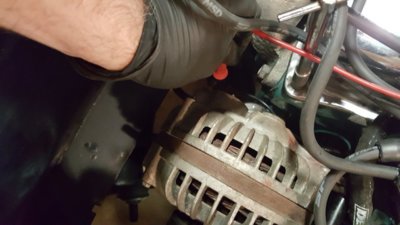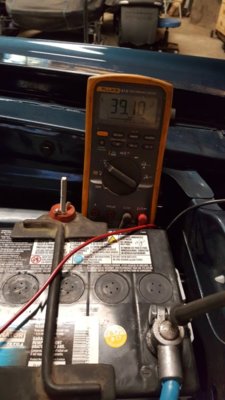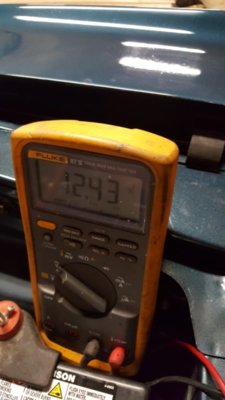Glenwood
Well-Known Member
- Local time
- 8:43 AM
- Joined
- Jun 19, 2015
- Messages
- 2,925
- Reaction score
- 2,851
- Location
- Kawartha Lakes, Ontario
Thank you for the detailed info. I've been reading up on this subject quite a bit lately at nauseum! (OCD as my wife calls it). After numerous attempts to tune, I realized there are other contributing factors that are likely causing my issues. Many have pointed out the missing shroud as a main source of the heating problem, but I feel that while a shroud is essential to maximizing cooling efficiency, the root cause lies in the ignition/timing system. With issues in this area, the engine is not running well and causes some overheating that is magnified by the hot outside temperature at the time; which in turn affects the fuel in the eddy and so on.
So where am I at?
Well, it is difficult to determine exactly where the issue lies. I suspect the coil primary circuit being starved for voltage and/or increased resistance as it heats up all leading to a reduction in output voltage and possible erratic behaviour. This may be why only some spark plugs appear to be black from running rich.
Here are my findings:
ballast resistor 1.6ohms at room temperature
Coil: accel super stock
primary 1.5ohms cold, 2ohms when (very) hot
secondary 10.3kohms cold, 12.9kohms (very) hot
key on-not running
voltage to ballast 11.39V (to ground)
from ballast 6.45V to ground (suggests a drop of 4.94V & current of 3.09A)
Measuring to ground is not accurate however, as this is a closed circuit. Measuring to the neg side of the coil:
Across the coil: 5.37V. At 1.5ohms, the current is 3.36A. This means that the voltage drop across the BR is actually 5.38V. Total voltage applied from the orange box is 10.75V.
Running at 2000rpm (engine still warming up)
Voltage across coil is now 3.4V which drops the current to 2.27A and a vdrop across the BR of 3.63V, meaning total voltage applied from the orange box is now only 7.03V.
I'm not sure if these voltages are normal, but they seem low to me. I think the BR is too high causing to much of a vdrop and should be reduced. However, I cannot find specific details on how much current this circuit should have. I'm thinking that I have to buy a new coil and BR if required. But which coil to buy? So many choices...
The suspected low voltage of 11.39V to the BR led me to discover that the charging circuit has failed. The constant output voltage regulator is supplying about 10V to the alternator field, but the output from the alt is 36V! With a load applied, the voltage dropped to 22V. I'm guessing the alt diodes are fried and the VR may also be cooked from the long trip I took. I plan to take the alt for testing to a local shop after a few more tests of my own.
So where am I at?
Well, it is difficult to determine exactly where the issue lies. I suspect the coil primary circuit being starved for voltage and/or increased resistance as it heats up all leading to a reduction in output voltage and possible erratic behaviour. This may be why only some spark plugs appear to be black from running rich.
Here are my findings:
ballast resistor 1.6ohms at room temperature
Coil: accel super stock
primary 1.5ohms cold, 2ohms when (very) hot
secondary 10.3kohms cold, 12.9kohms (very) hot
key on-not running
voltage to ballast 11.39V (to ground)
from ballast 6.45V to ground (suggests a drop of 4.94V & current of 3.09A)
Measuring to ground is not accurate however, as this is a closed circuit. Measuring to the neg side of the coil:
Across the coil: 5.37V. At 1.5ohms, the current is 3.36A. This means that the voltage drop across the BR is actually 5.38V. Total voltage applied from the orange box is 10.75V.
Running at 2000rpm (engine still warming up)
Voltage across coil is now 3.4V which drops the current to 2.27A and a vdrop across the BR of 3.63V, meaning total voltage applied from the orange box is now only 7.03V.
I'm not sure if these voltages are normal, but they seem low to me. I think the BR is too high causing to much of a vdrop and should be reduced. However, I cannot find specific details on how much current this circuit should have. I'm thinking that I have to buy a new coil and BR if required. But which coil to buy? So many choices...
The suspected low voltage of 11.39V to the BR led me to discover that the charging circuit has failed. The constant output voltage regulator is supplying about 10V to the alternator field, but the output from the alt is 36V! With a load applied, the voltage dropped to 22V. I'm guessing the alt diodes are fried and the VR may also be cooked from the long trip I took. I plan to take the alt for testing to a local shop after a few more tests of my own.


















